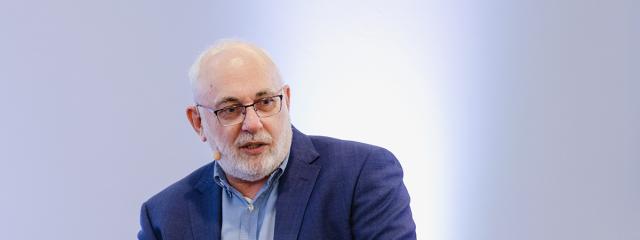Overseeing a world-class payment system
*This article was originally published in Financial IT’s 2023 fall issue on September 17, 2023. For more information about Financial IT, please visit financialit.net.
An interview with Tracey Black, President and CEO of Payments Canada.
Financial IT: How do you best describe Payments Canada’s role within the payment ecosystem?
Tracey Black (TB): The Canadian economy depends on the exchange of hundreds of billions of dollars each day. Payments Canada is a non-profit organization that owns and operates Canada’s national payment systems and ensures that financial transactions are cleared and settled securely and efficiently. In 2022, the value of payments cleared and settled by Payments Canada’s systems was approximately $119 trillion, or more than $475 billion every business day.
Payment systems are typically operated by a country’s central bank, so Payments Canada’s role and arrangement are somewhat unique. Our mandate is defined by legislation, the Canadian Payments Act. Our public purpose objectives, defined by the Department of Finance, include promoting the efficiency, safety and soundness of Canada’s clearing and settlement systems and taking into account the interests of users.
Our position at the centre of the payment ecosystem provides opportunities for efficiency, and we often must navigate competing stakeholder priorities. Working closely with our regulators, members and stakeholders, Payments Canada has a proven history of operating payment infrastructure and providing supporting services that ensure our members can meet the payment needs of Canadians and Canadian businesses.
Financial IT: What are some of the payment trends shaping Canada’s payment landscape?
TB: Payments Canada closely monitors global payment trends and conducts market research to better understand the payment behaviours and preferences of Canadians and Canadian businesses to confirm and inform our strategy. Some of the global topics we’re keeping a close eye on include payment initiation methods, the introduction and adoption of ISO 20022 and cross border real-time payments. Domestically, we are following developments in open banking and digital ID.
ISO 20022 is an international messaging standard designed to simplify global business communication through the use of data-rich payments — more information about the payment traveling with the payment. The standard has the potential to dramatically reduce payment processing costs and to support the introduction of enhanced payment experiences for all end users. In March 2023, more than 11,000 financial institutions in over 200 countries and territories around the world, including Canada, participated in the start of Swift’s global migration to ISO 20022 for cross-border payments and reporting. Working closely with our system participants, Payments Canada introduced ISO 20022 to Lynx, our high-value payment system. To date, just over 50 per cent of Lynx transactions are already using the ISO 20022 (Swift MX) message standard.
Payments Canada intends for all of our payment systems to support ISO 20022. We will continue to work closely with our members and stakeholders to provide the education needed to inform end users about the value of data-rich payments and the potential benefits for Canadian businesses and consumers.
Financial IT: I know that Payments Canada is a strong proponent of broadening competition within Canada’s payment industry, why do you believe this is so important?
TB: Our legislation, the Canadian Payments Act, defines which entities must be, or are eligible to be members of Payments Canada. Membership in Payments Canada was last reviewed in 2001, and is currently limited to a narrowly defined group of financial institutions. Members of Payments Canada that meet payment system participant requirements are able to directly connect to our systems. However, the payment ecosystem continues to evolve and there are more participants in payments than ever before. Amendments to the Canadian Payments Act would allow credit unions, regulated payment service providers (PSPs) and designated financial market infrastructure entities that meet the necessary requirements to become members of Payments Canada.
Payments Canada believes that broader competition will result in more payment options and experiences for Canadians and Canadian businesses. Defining broader access to Canada’s national payment infrastructure within the Canadian Payments Act will ensure innovation happens within — not outside — the regulatory system. Broader membership will create the opportunity for broader direct participation in Payments Canada’s systems, and will result in increased competition in Canada’s payment industry.
Financial IT: Are there any learnings or insights that Payments Canada has garnered from payment innovation initiatives that have been rolled out in other markets?
TB: Globally, we’re observing the benefits of digital ID, a secure way to verify an individual’s identity. In the payment industry, use of digital verification can enhance security, reduce costs and facilitate the adoption of new payment methods and services. Payments Canada is closely monitoring developments in other jurisdictions and participating in industry discussions related to the future of digital ID.
Another area of interest to Payments Canada is Confirmation of Payee, a service that asks the sender to confirm the name associated with the receiving account to ensure a payment is being sent to the intended recipient. Pay.UK introduced Confirmation of Payee in 2020 to prevent misdirected payments — an error that occurs when incorrect information is provided and a payment is sent to the incorrect account. Today, over one million Confirmation of Payee requests are completed per day in the U.K., providing greater assurance to the sender that the payment is being sent to the right recipient. If introduced in Canada, Confirmation of Payee could reduce the occurrence of misdirected payments and introduce an additional layer of assurance and security for consumers and businesses.
What is your vision of what the future of payments will look like? Looking to the future, how do you think Payments Canada’s role will evolve as the payment ecosystem continues to innovate?
TB: Canadians have demonstrated a continued and growing preference for electronic payments and payment experiences that are embedded and frictionless, even invisible. These experiences are made possible by the use of technology and mobile applications that can authenticate the initiator and the receiver of the payment. Canadians are comfortable with these experiences because they trust payment providers to ensure the security of their transactions.
Payments Canada’s mandate includes facilitating the development of new payment methods and technologies. With the introduction of broader membership and broader access to Canada’s payment systems, managing more diverse member needs and ensuring the efficiency, safety and soundness of Canada’s payment systems, while providing a platform for innovation, will present opportunities and challenges. Payments Canada will continue to facilitate important discussions between our members, regulators and stakeholders, and to enhance our systems and services to meet the payments needs of Canadians. We will continue to educate our ecosystem about the important role payments play holistically to support the Canadian economy, and to ensure that Canada remains globally competitive in the larger payment ecosystem.




